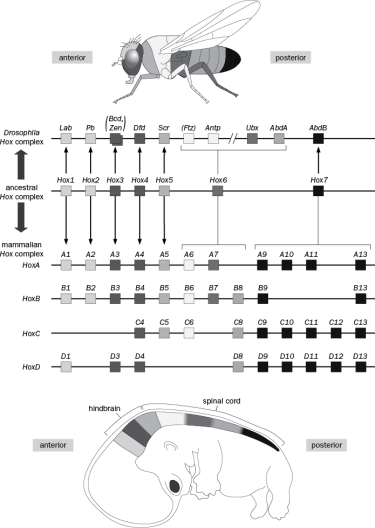Hox genes are highly conserved players in anteroposterior patterning and were named for the homeotic transformations exhibited by their mutants in Drosophila.  Figure
Figure
A. The original Antp mutant has legs in place of antennae. Is this a gain- or loss-of-function mutation?
B. The original Ubx mutant has a second set of wings instead of halteres (flying organs normally found on the third thoracic segment). Is this a gain- or loss-of-function mutation?
C. Although the role of Hox genes in anteroposterior patterning is conserved in vertebrates, HoxA9-13 and D9-13 are used in proximodistal limb patterning. What evolutionary events made acquisition of this novel function possible?
Correct Answer:
Verified
View Answer
Unlock this answer now
Get Access to more Verified Answers free of charge
Q23: Mice that are homozygous mutant for Small
Q24: Which of the following are NOT conserved
Q25: The complex organization of the human eye
Q26: Which of the following are true of
Q27: Put the following events in the evolution
Q28: How can natural selection explain both the
Q29: Draw a parallel between gene duplication and
Q30: A significant increase in the number of
Q31: Which mechanism(s) could contribute to larger brains
Q33: In clever experiments, expression of the human
Unlock this Answer For Free Now!
View this answer and more for free by performing one of the following actions

Scan the QR code to install the App and get 2 free unlocks

Unlock quizzes for free by uploading documents